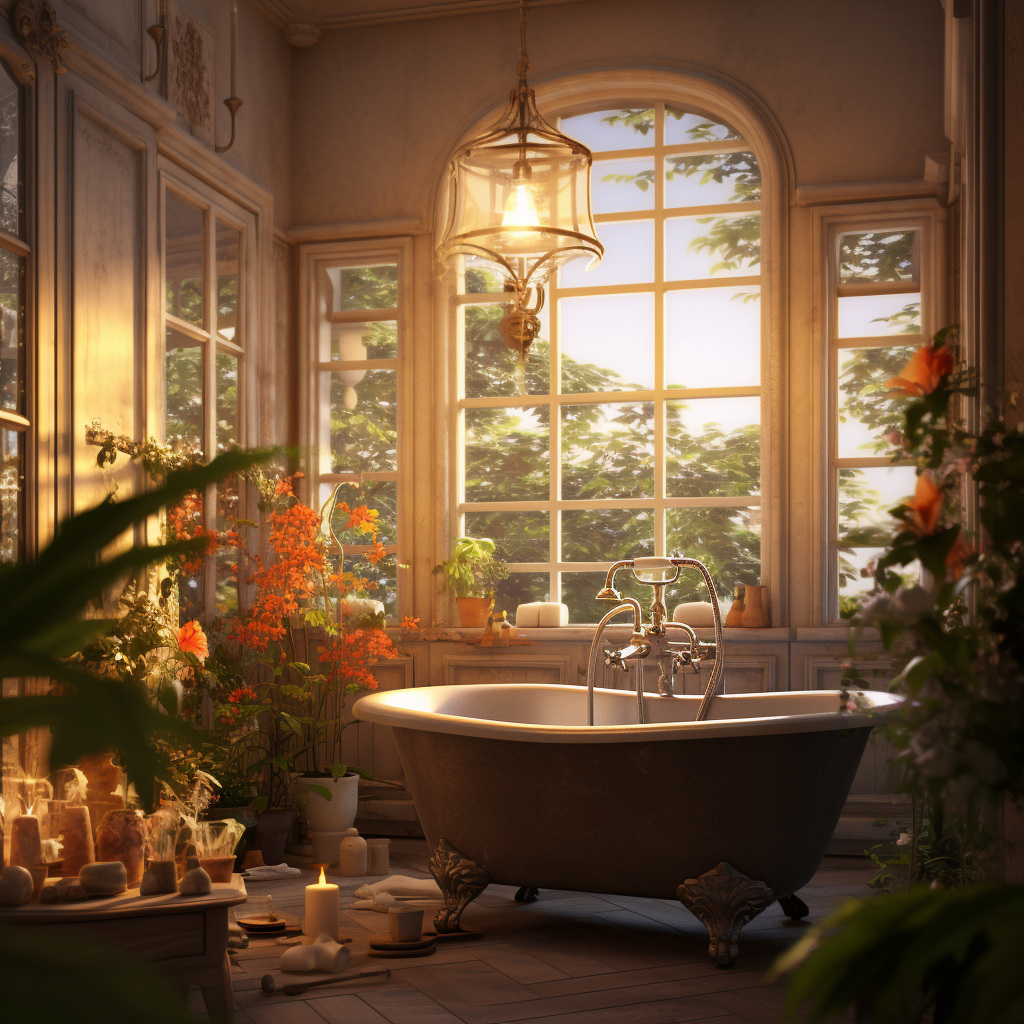
The Illuminating World of Bathroom Lighting
When it comes to home design and decor, bathroom lighting might not be the first element that comes to mind. However, appropriate lighting in the bathroom is as vital as it is in any other room of the house. From morning rituals to winding down at night, the bathroom serves multiple purposes and its lighting should be designed to accommodate these varied needs.
Understanding the Importance of Bathroom Lighting
Bathrooms have transcended their traditional utilitarian function. Today, they are not just spaces where we attend to basic needs; they are also sanctuaries of relaxation, spaces for self-care, and sometimes even the location for a quick photo for one’s social media. The lighting can either make or break these experiences.
- Safety First: One of the main reasons lighting is critical in bathrooms is for safety. Wet floors and the use of electrical appliances mean there’s potential for accidents. Proper lighting ensures that every corner of the room is visible, reducing the chances of slips or mishaps.
- Functional Needs: Whether you’re shaving, applying makeup, or merely washing your face, you need sufficient illumination to see clearly. This will ensure that you carry out these tasks efficiently and accurately.
- Aesthetic Appeal: Just like any other part of your home, the bathroom deserves to be beautiful. Lighting plays a significant role in enhancing the ambiance, showcasing decorative tiles, highlighting artwork, or simply setting the mood for a relaxing bath.
Types of Bathroom Lighting
There are several types of lights that one can incorporate in the bathroom, each serving a distinct purpose:
- Ambient Lighting: This is the primary source of light in the bathroom. It takes the place of natural sunlight and is essential for general illumination. Ceiling-mounted fixtures, chandeliers, and recessed lights are common sources of ambient lighting.
- Task Lighting: As the name suggests, task lighting focuses on specific areas to facilitate particular tasks. For instance, sconce lights or vertical fixtures on either side of the mirror ensure that the face is evenly lit, making activities like shaving or applying makeup easier.
- Accent Lighting: This type of lighting is all about drawing attention to particular design features in the bathroom. Whether you want to highlight a beautiful bathtub, artwork, or a decorative wall, accent lights like small recessed lights can do the trick.
- Decorative Lighting: Think of decorative lights as the jewelry of the bathroom. These might not offer the most light, but they significantly contribute to the bathroom’s aesthetic. Examples include chandeliers or stylish pendant lights.
Choosing the Right Bulb
The type of bulb you choose impacts not just the brightness but also the energy consumption and ambiance:
- Incandescent Bulbs: These are traditional bulbs that give a warm, yellowish light. They’re not the most energy-efficient, but they render colors accurately.
- Compact Fluorescent Lights (CFLs): More energy-efficient than incandescent bulbs, CFLs come in a range of colors. However, they may not always render colors as accurately.
- LEDs: These are the most energy-efficient and have a long lifespan. They come in a variety of color temperatures, allowing users to customize the mood they want.
Lighting Placement and Design Tips
- Mirror Lighting: When lighting the mirror area, avoid placing a single light directly above the mirror. This can cast shadows on the face, making daily grooming tasks challenging. Instead, opt for sidelights or a combination of both overhead and side lights.
- Dimmers: Installing dimmers can change the bathroom’s ambiance instantly. Want a relaxing bath? Dim the lights. Need to find something quickly? Brighten them up. They also help save energy.
- Layer Your Lights: A combination of ambient, task, and accent lighting can transform the functional space into a luxurious spa-like retreat.
- Think About Color Temperature: Lights can be warm, neutral, or cool. Warm lights (around 2700K) offer a cozy, yellowish glow, while cool lights (around 4000K) are brighter and more akin to daylight. Depending on your personal preference and the tasks you perform, choose an appropriate color temperature.
In Conclusion
Bathroom lighting, when done right, combines functionality with aesthetics. It ensures that the space is safe, tasks are performed efficiently, and the ambiance is inviting. As bathrooms continue to evolve from merely functional spaces to personal retreats, the importance of lighting in achieving this transformation cannot be overstated. Like any other room, the bathroom deserves thoughtful design, and its lighting is a cornerstone of this process.

